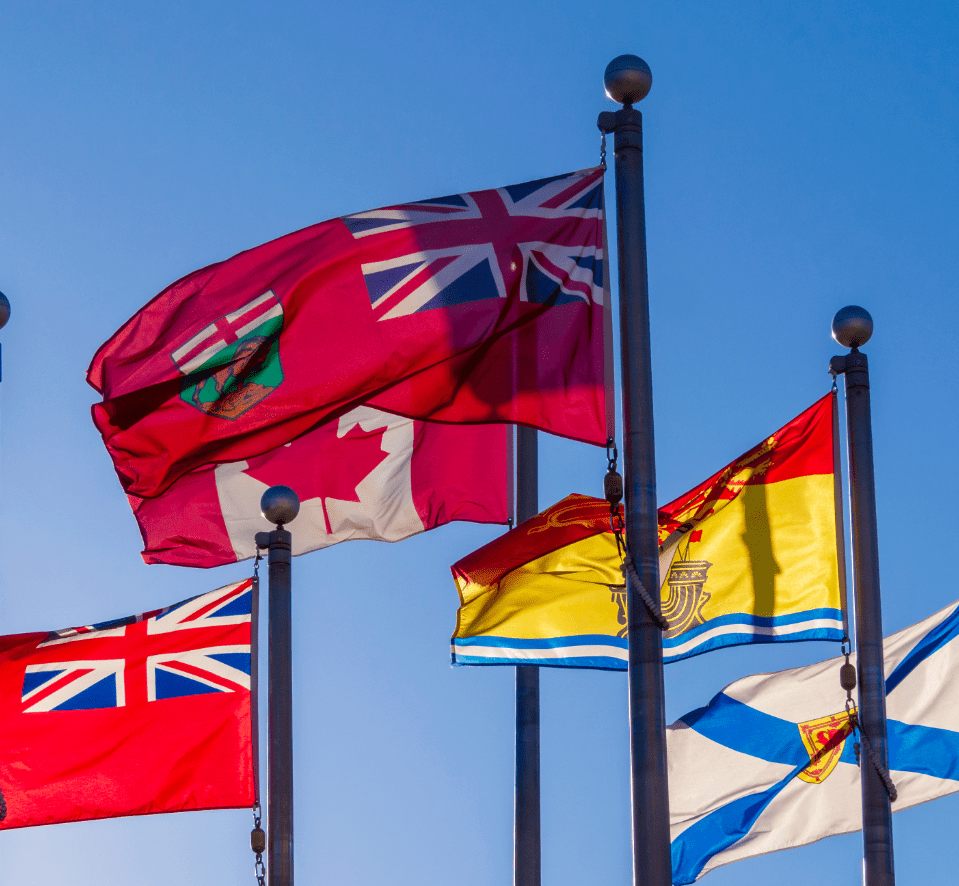
Provincial
Nominee
Program
There are different needs for skilled workers in Canada’s provinces and territories. Therefore, many provinces and territories have collaborated with the national government to create the Provincial Nominee Program (PNP) to address their local needs for workers in various occupations. In general, a foreign worker can apply to the PNP of a province or territory where he or she wants to live and work in Canada. If the foreign worker receives a nomination from the participating province or territory for immigration to Canada through its PNP, the next step is to apply to the Canadian immigration agency for permanent residency. If approved for Canadian immigration, the foreign worker and his or her family will settle long-term in the province or territory that nominated them.
There are nine provinces and two territories that participate in the PNP:
- Yukon Territory
- Saskatchewan
- Prince Edward Island
- Ontario
- Nova Scotia
- Northwest Territories
- Newfoundland and Labrador
- Manitoba
- New Brunswick
- Alberta
- British Columbia
It’s important to know that Quebec, the mostly French-speaking province where Montreal is located, doesn’t participate in the Provincial Nominee Program. This is because Quebec, working with the Canadian national government, has developed its own Quebec Skilled Worker Program (QSWP) for skilled foreign workers who have the job skills and other qualifications needed in Quebec.
PNP General Requirements
Different territories that participate in the Provincial Nominee Program have their own procedures. However, generally, the PNP will have the following requirements.
- Having work experience in a certain occupation which is in high demand in a particular province or territory
- Having post-secondary education documents or training for the high-demand occupation
- Being able to speak English or French at a particular level
- Certain age ranges are often specified
- Some PNPs have points for various factors and a minimum score is required
- The foreign workers should agree to work and live in the province that will nominate them
- Having a “connection” to the province or territory may be required (such as living there in the past)
- A provincial nomination is needed before they can apply for a permanent resident visa to Canada
- Foreign workers and their families should be in good health
- Foreign workers and their families should be of good character so they will live peacefully in the community
- Supporting documents are usually required
Process
The process of applying for a Provincial Nominee Program usually varies depending on a particular province in Canada. However, it generally involves the necessary steps below.
1. Application for a Provincial Nominee Program
Foreign workers can apply for a Provincial Nominee Program through the traditional non-Express Entry stream of a participating province or territory. The non-Express Entry stream can be done online or through submitting a paper application in the mail. If the foreign worker manages to get the required provincial nomination, they can move to the next step of applying to the Canadian immigration agency for permanent residency. Skilled immigrants can also apply for immigration to Canada through the Express Entry system, which is only done online. If they receive a nomination from a province or territory for its PNP, the foreign worker must update his or her Express Entry profile to reflect this and if they receive an Invitation to Apply (ITA), they will have 60 days to submit their Canadian visa application for permanent residency.
2. Application for Canadian Permanent Residency
The foreign worker who receives a PNP nomination will need to file their application for permanent residency with the Canadian immigration agency with all of the required supporting documents and the governmental fee(s). The documents may include medical reports, proof of funds, police certificates, and other documents. When the immigrant is approved, they will receive a Confirmation of Permanent Residence (COPR) and a Permanent Resident Visa will be stamped in their passport. When the foreign worker and his or her family members enter Canada, they will need to show their COPR, Canadian visa (if required for citizens of their country) and other documents to the officials at the port of entry. The new immigrant will also need to pay a small fee to receive the plastic Permanent Resident Card which they will carry as identification.
Advantages of
Permanent Residency
Foreign workers and their families receive many advantages once they enter Canada as permanent residents through the Provincial Nominee Program. Below, are some of the advantages they get after they arrive in Canada:
- They are allowed to live in Canada for as long as they choose to since there is no time limitation.
- They are allowed to attend educational institutions in Canada to develop and grow their careers.
- They are allowed to work legally and they can also start a business if they want.
- They have access to free or subsidized public healthcare in Canada.
- They can apply for a driver’s license in their area of residence.
- Those who meet certain criteria are allowed to sponsor family members for Canadian visas.
- They are allowed to travel to and from Canada whenever they want.
- They have the opportunity to enjoy all the rights, peacefulness, beauty, and high quality of life like other Canadians.
- After living in Canada three years with permanent residency and meeting other criteria, they can apply for Canadian citizenship and get a passport to show they are citizens of Canada.
Thus, the Provincial Nominee Program offers 11 different ways to immigrate to Canada, by getting nominated for a PNP and then applying for Canadian permanent residency to live and work long-term in this immigrant-friendly country.
